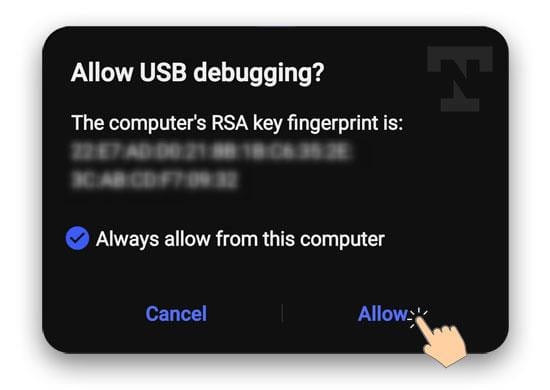Android phones come with a boatload of pre-installed apps that may be useless to the end user. We can’t freeze or uninstall system apps on Android without root, but ADB is there to help. In this tutorial, we’ll see how to get the list of system apps, freeze, disable, and uninstall bloatware on Android phones using ADB commands. Besides, we’ll also check debloater tools like UAD GUI or ADB AppControl that can help remove unwanted apps safely through a graphical user interface.
1. Uninstall and Disable Apps via ADB
Before you can get rid of useless system apps on your Android device using ADB, you’ll have to set up the latest Android SDK Platform tools on your Windows, Mac, or Linux computer. Moreover, you’ll need the package names of the apps you want to uninstall.
I assume that you have already downloaded and extracted the SDK Platform Tools.
- Extend the screen time-out duration to 5-10 minutes from Settings > Display > Screen timeout.
- Open the ‘platform-tools‘ folder and open a PowerShell window with its path by typing “powershell” in the File Explorer’s address bar and pressing the Enter key.
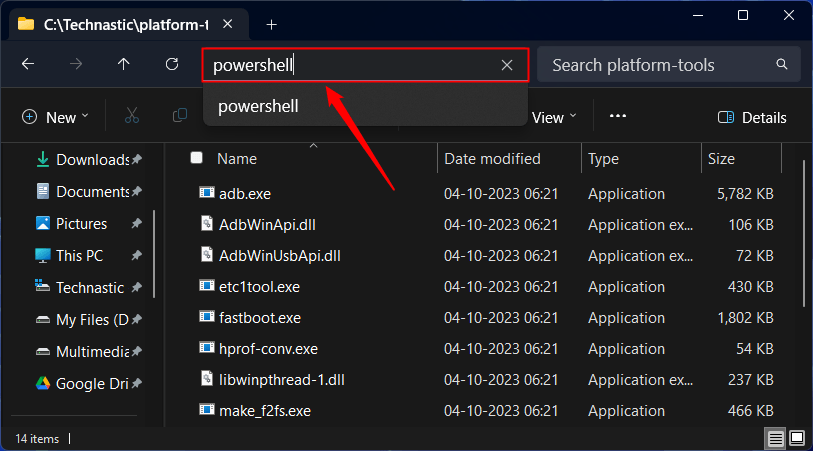
- Now, execute the following command to check if ADB can detect your device.
adb devices
- Keep an eye on your phone and authorize ADB access via USB.
- The command window will display the ID for the connected device as shown below.

- Type the following command and hit the Enter key.
adb shell
- You can use the following commands to get the list of app package names. The 3rd command lists apps from specific vendors, such as Samsung, Google, Xiaomi, Android, Vivo, Realme, OnePlus, Amazon, Oppo, ColorOS, Facebook, etc.
#1 List all installed apps
pm list packages
#2 List only system apps
pm list packages -s
#3 List apps by group
pm list packages | grep 'samsung' - Below is how I got the list of all Google apps on my Galaxy S24 Ultra. The portion highlighted in yellow contains the app package names.

- Refer to our list of Android bloatware on devices from major OEMs.
Once you have the list of apps ready, you can easily remove them using the ADB Shell commands.
- Launch PowerShell with the path of the ‘platform-tools‘ folder as described above.
- Connect your Android device to the computer and execute the following command.
adb shell
- Now use one of the following commands to uninstall a system app on your Android.
#1 To uninstall an app with its data
pm uninstall --user 0 <package-name>
#2 To uninstall an app but keep its data
pm uninstall -k --user 0 <package-name> - Press the Enter key. You’ll get a “Success” message when the app is removed.
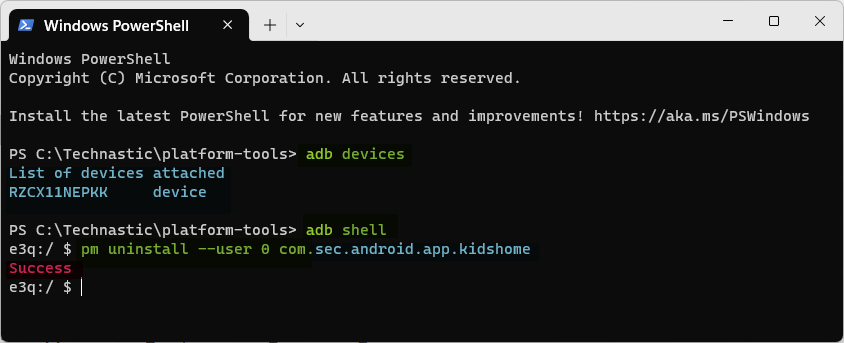
- You can thus uninstall as many system apps as you want.
Restore Android Apps via ADB
You can easily restore an app if you uninstalled it by mistake or need it later.
cmd package install-existing <package-name>
Don’t forget to execute adb shell before you use the above command.
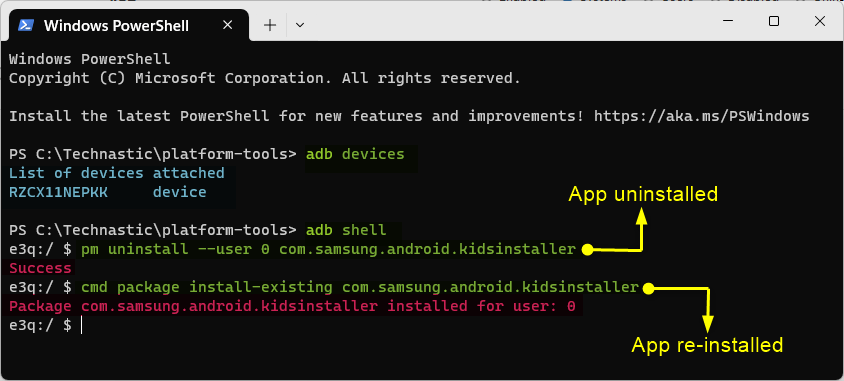
Freeze Background Apps on Android
Android has always lagged behind iOS in managing the app background processes. If you want to freeze the background apps, you can do that without root using the following ADB command.
- Launch the Command Prompt.
- Connect your device via a USB cable.
- Issue the following command.
adb shell
- Then execute the following command. Don’t forget to replace <package name> in the command below with an app.
cmd appops set <package-name> RUN_IN_BACKGROUND ignore - To enable the frozen app and allow it to run in the background again, you can use the following command.
cmd appops <package-name> RUN_IN_BACKGROUND allow

Disable System Apps on Android
ADB is a great command-line tool, and it can be used in several ways to perform tasks on Android that would otherwise not have been possible. Besides freezing system apps, ADB can help you disable system apps. The following command lets you disable a system app on an Android device.
adb shell pm disable-user --user 0 <package-name>
If you want to enable a disabled app later, you can use the following command.
adb shell pm enable --user 0 <package-name>
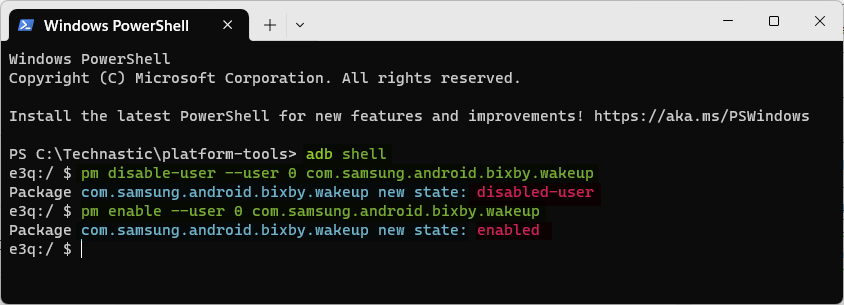
Force Stop Android Apps
The following ADB command will force any app to stop.
adb shell am force-stop <package-name>
Fixing ‘Delete Failed Internal Error’ in ADB
Sometimes, Android OEMs restrict the uninstallation of certain system apps using ADB commands. In such a case, you might get the following error.
Failure[Delete failed Internal Error]
To uninstall such apps, you’ll need to grant ADB root access. If you have a rooted device, you can execute the following commands one after another.
adb shell su mount -o rw,remount /system rm -rf /system/app/AntHalService.apk rm -rf /data/data/com.dsi.ant.server mount -o ro,remount /system exit exit
2. Using Universal Android Debloater
Universal Android Debloater is a great bloatware removal tool. Since the tool has a GUI, it’s easier to use than the ADB method. Also, it lets you disable and restore multiple apps at once and supports Windows, macOS, and Linux.
- Download the latest Universal Android Debloater.
- Connect your Android phone to your computer and launch uad_gui-windows.exe.
- Make sure that USB debugging is enabled on your device.
- When your device is detected by the UAD GUI tool, select the apps you want to uninstall using the filters.
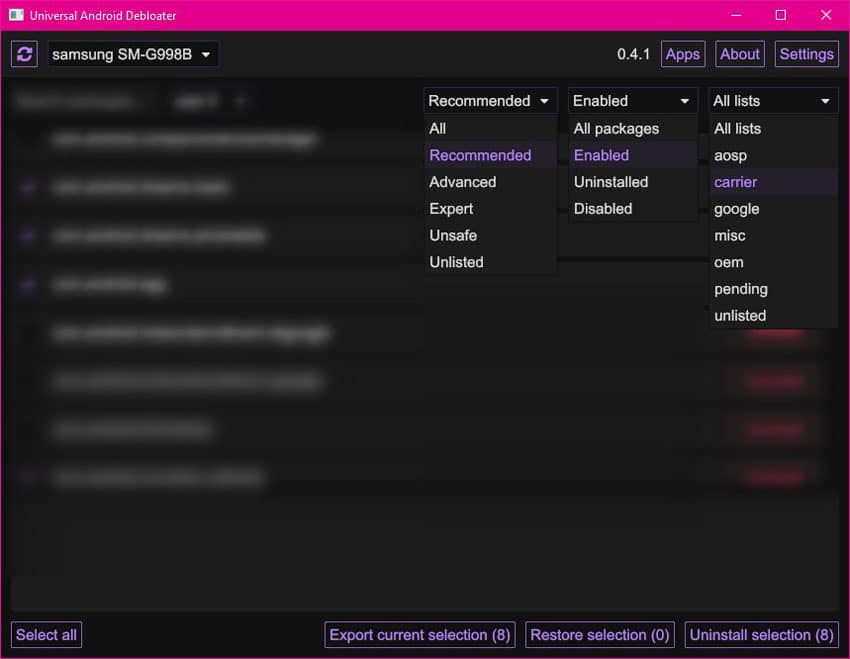
- Finally, click the Uninstall button.
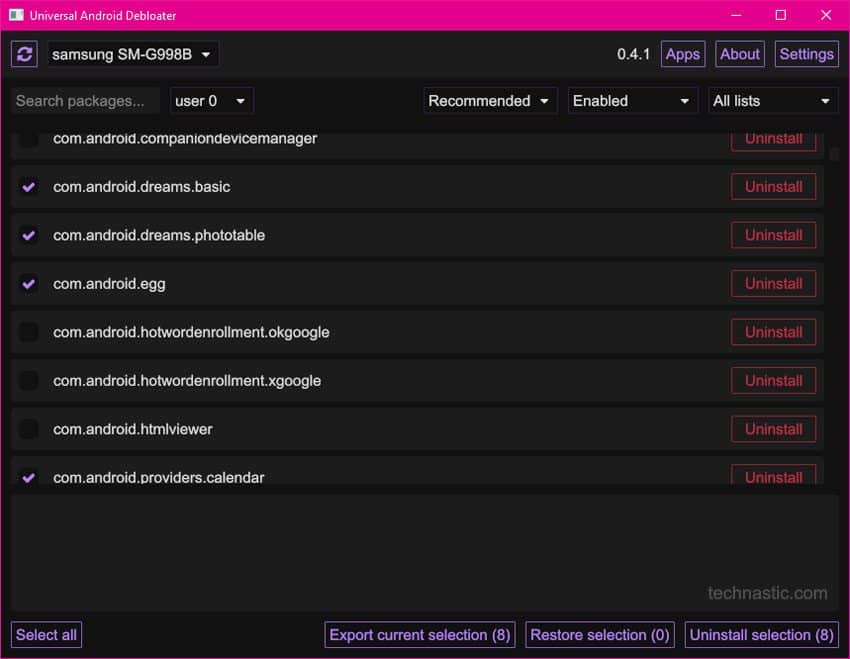
3. Debloat Android Using ADB AppControl
ADB AppControl is a feature-rich utility for Android. It lets you manage apps and control your Android device remotely. Here is how to use this tool to uninstall system apps on Android.
- Download ADB AppControl on your Windows PC.
- Download and install .NET Framework 4.8 on your computer and turn on USB debugging on your phone.
- Double-click ADBAppControl.exe to run the tool.

- Connect your device and wait until ADB AppControl detects it.
- Click the Applications tab and select the apps you want to disable or uninstall.
- Now, click Select and choose the Uninstall option from the drop-down.
- Finally, click the Apply button.

If you have created or downloaded a list of bloatware for your Android device, load it to ADB AppControl and disable or uninstall the selected apps at once. Create a text file and mention the package names of the apps you want to remove.
Now, click the Load Preset button on ADB AppControl, navigate to the text file, and select it. All the apps in the list will be marked in the tool.
You can then uninstall all the selected system apps in one go.
4. Using Shizuku Apps
While the ADB method might seem complicated and time-consuming, tools like ADB AppControl and UAD GUI require a Windows PC. Shizuku leverages ADB-level permissions and system APIs to facilitate on-device rootless mods. This means you can use Shizuku apps to manage system apps on Android without rooting the device.
- Install and set up Shizuku on your Android phone or tablet.
- Download one of the following apps as per your requirements. All these apps require access to Shizuku to work.
- Hail (disable/freeze/hide)
- Canta (uninstall)
- Ice Box (freeze/hide)
- Package Manager (disable/uninstall)
- Let’s check how to use Package Manager to uninstall or disable Android apps without root.
- Open the app when installed and tap Start.
- The Package Manager app will request permission to integrate with Shizuku. Tap Request and select Allow all the time to allow Package Manager access to Shizuku.
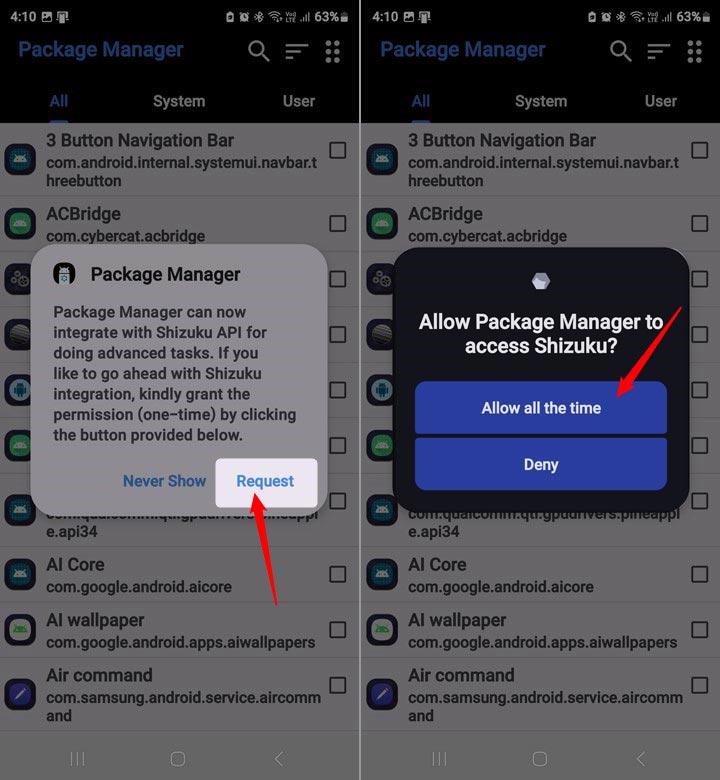
- To uninstall multiple apps at once, check the box next to the apps, tap Batch Options, and select Uninstall.
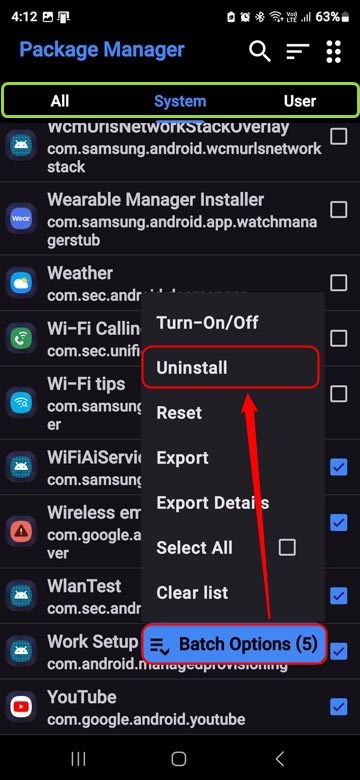
- If you wish to uninstall or disable system apps individually, tap the app you want to remove, select the Disable or Uninstall option, and confirm the removal.
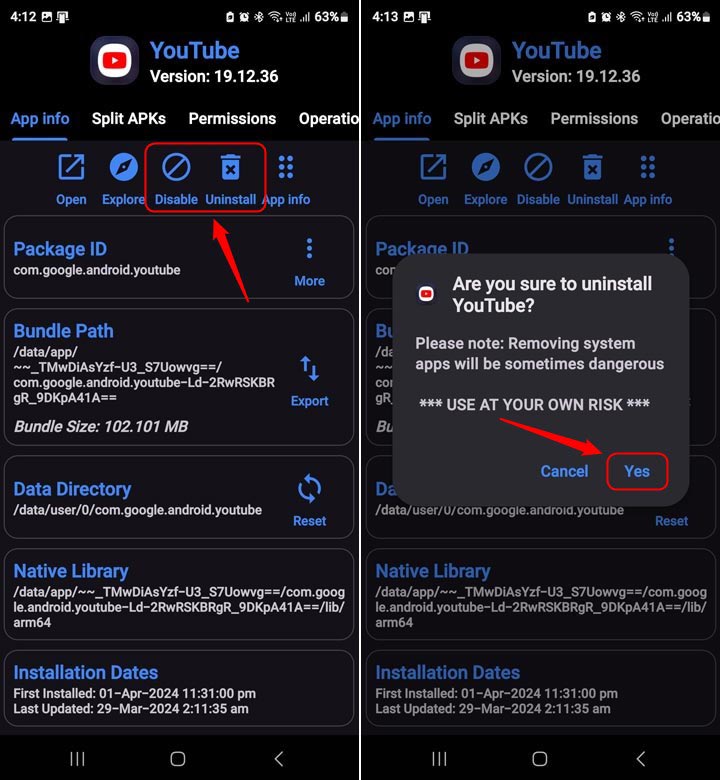
With these four methods, you can easily manage bloatware and battery-draining system apps without root.
